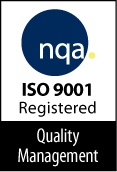The way patients receive care and what patients expect from providers is changing at an unprecedented pace. Patients are generally more informed and educated about their role in seeking care, and what they can and should expect from healthcare providers. Recently, USA Today highlighted five major changes we will see in healthcare in the next five years. Among these trends, increased use of Clinical Software Technology is expected to be the lever which healthcare providers use to better manage workflow, as well as improve quality of care and patient satisfaction.
Another trend cited by the article explains a shift from single provider care to healthcare teams assigned to patients. The shift toward better collaboration between providers via accountable care organizations (ACOs) or other emerging models will improve data-sharing via connected EHRs. This means increased pressure for providers to be more responsive to patients.
Cost-Effective Medical Imaging Technologies
To navigate this new environment, physicians are looking for the best and most cost-efficient ways to leverage Clinical Software Technology and collaborative tools to streamline workflow. Today, we are seeing a rapid movement requiring greater mobility in communications-by the population overall-but particularly by physicians and other health professionals. According to various surveys, physicians now are 250% more likely to own a tablet than other consumers; half of clinicians routinely use a combination of smartphone, tablet and computer; and smartphone usage accounts for more than 40% of clinician’s at-work digital time.
One area where mobile device usage can help support improved patient care is medical imaging. Mobility, combined with new medical image viewing technologies, empowers physicians to have access to the information they need in a timelier manner in order to deliver care. Not only do mobile medical image viewers offer much higher levels of flexibility for providers, they also boost efficiency.
Mobile medical image viewing technologies can cost-effectively enhance the way clinicians deliver care-enabling faster, more efficient, and highly secure methods for viewing images from disparate systems in addition to diagnosing patients, seeking second opinions and collaborating in real time. More importantly enterprise-wide medical image access must be able to integrate with existing EHR or other IT systems and Clinical Research Data Collection tools.
Why Mobile is a Game-Changer for Medical Imaging
A common issue, which is still the case for many patients today, is that medical images are not easily transferred from organization to organization. Here’s a typical scenario: A referring clinician orders an MRI cardiac study. The images and interpretation results are available in the radiology PACS provided by Vendor A. Subsequently, the referring clinician refers the patient to a cardiologist. The cardiologist orders the imaging procedures that are available in the cardiology PACS provided by Vendor B. The referring physician and the cardiologist must now log in to two separate PACS to view images using separate viewers, even though both interpretation reports may be in the EHR or hospital information system.
In this scenario, remote access is dependent upon each PACS vendor’s image viewer and site security requirements. With some viewers, images may be downloaded onto an outside user device, which can present security issues.
The implementation of a single, enterprise-wide user viewer interface can make images accessible in a highly secure manner to as many users as needed. Workflow vastly improves and providers are able to integrate into virtually any system, including EHR, VNA and PACS, thus centralizing access.
Choosing Medical Image Viewer Solutions Wisely
When choosing a solution for mobile medical image viewing, it is critical to select one that is FDA cleared for diagnostic use. There are two FDA classes of accreditation. Class I devices are cleared for review, but not diagnosis; whereas Class II devices are cleared for diagnosis and classified in the same category as PACS.
Data security and privacy are other critical considerations when selecting a mobile medical image viewer solution. Patient data should remain behind a firewall and not be stored on the mobile device itself. It is also important to have a Clinical Software system that offers built-in encryption and user authentication through LDAP and active directory. Best practices include implementation and enforcement of extended IT policies for all mobile users.
Liberating Images for Better Patient Care
On-site or Cloud-based vendor neutral technologies can enable healthcare providers to streamline workflows compared to using traditional, decentralized PACS-based systems. Accessing images through an enterprise-wide mobile medical image viewing solution can positively impact physician practices by adding the many benefits of mobility.

